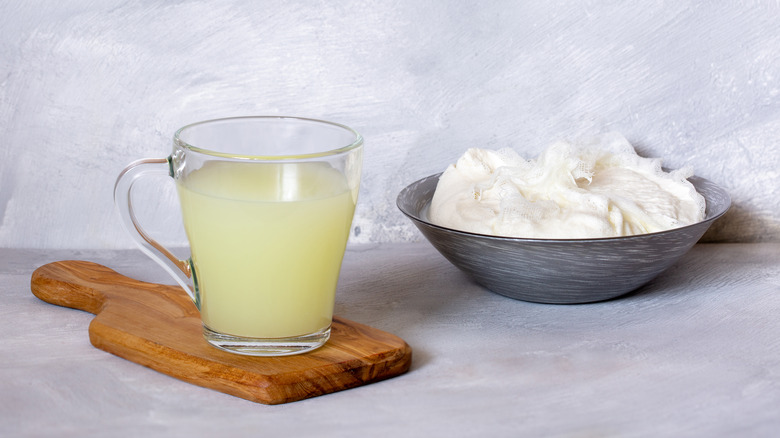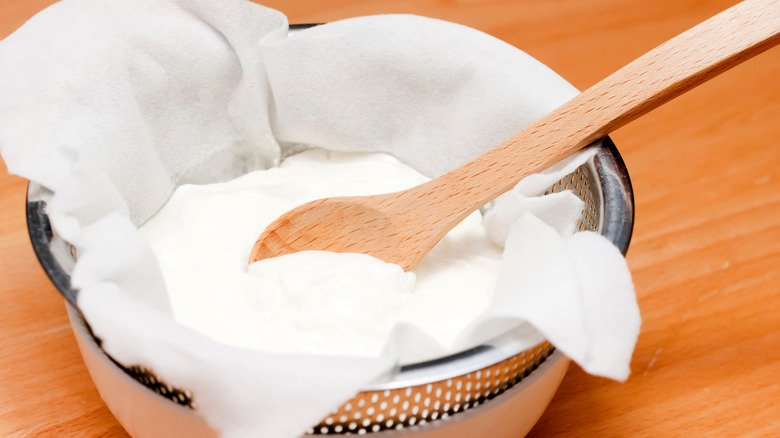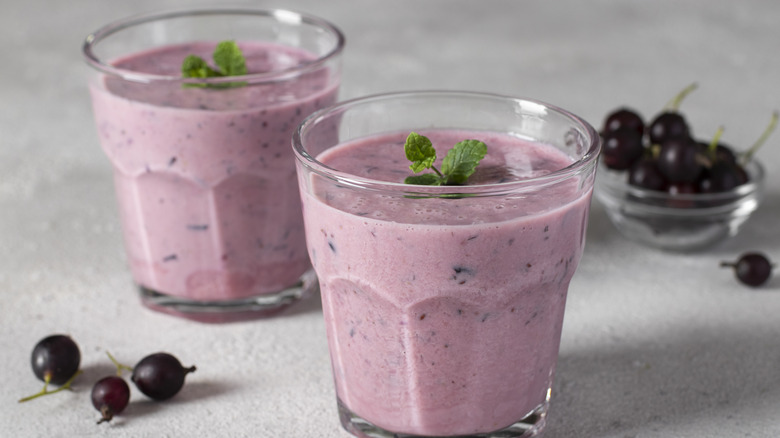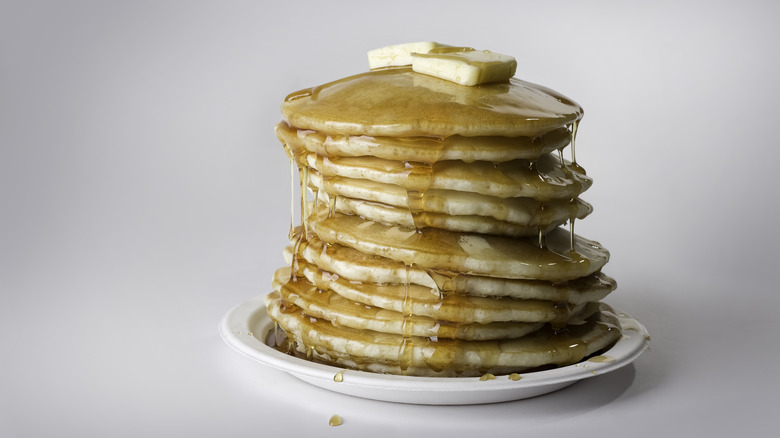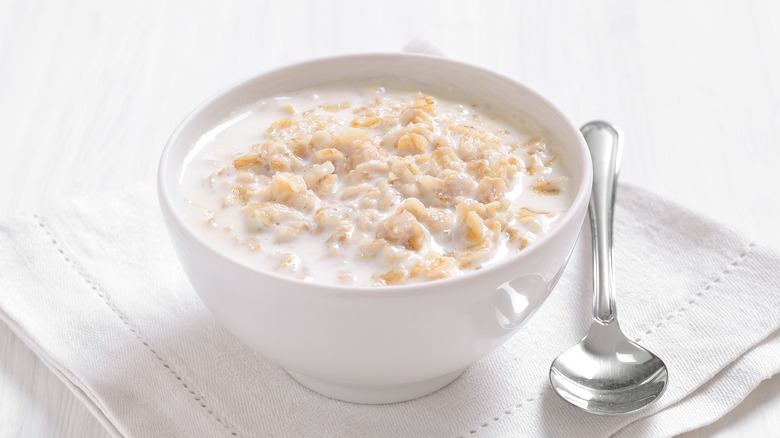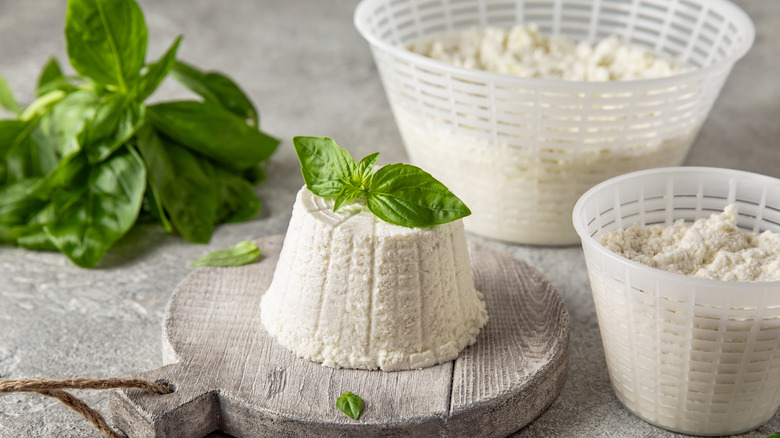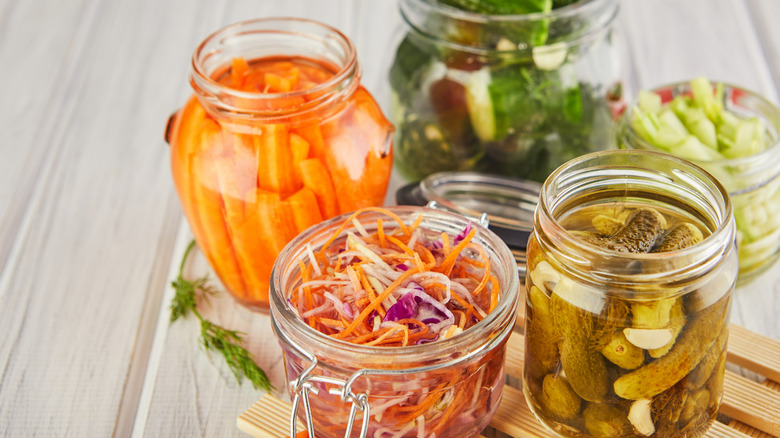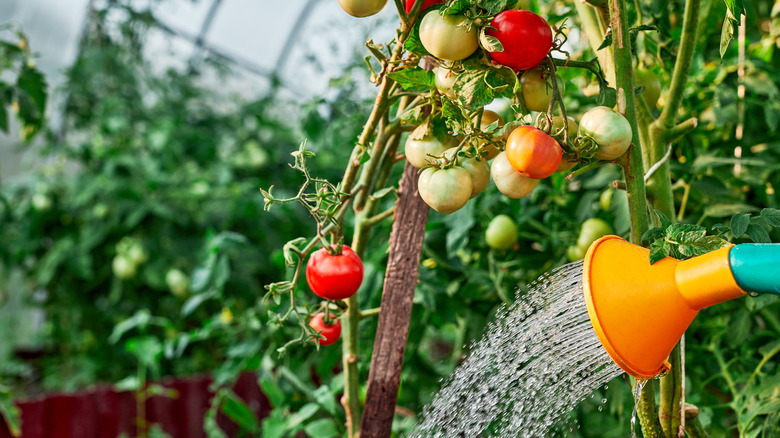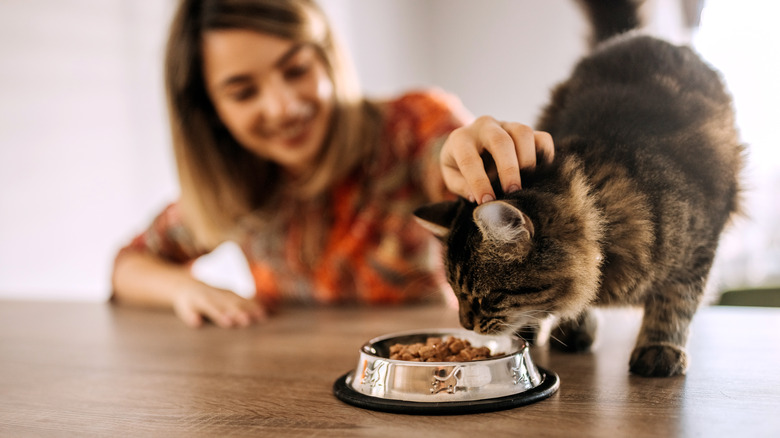10 Things To Do With Leftover Yogurt Whey Instead Of Tossing It Down The Sink
Yogurt whey is a byproduct of the homemade yogurt process. Technically, it's waste, assuming you're not making yogurt solely to make whey — but don't pour it down the drain! Whey can be put to good use as a substitute for other liquids such as milk, buttermilk, and water.
If you make yogurt at home, you might prefer to strain it. The yogurt straining process offers a thicker, creamier yogurt, separating solids from liquids. When you strain your yogurt, the yellowish liquid that's left over is acidic yogurt whey. You'll get about a cup of whey per pint of drained yogurt.
Whey has vitamins, minerals, probiotics, and protein, all of which would be a waste to pour down the drain. If you're already making yogurt, it doesn't cost you anything extra to make whey. And if you use whey in place of other ingredients, it could save you money. It's free food — use it.
Thankfully, there are also many different ways to use up yogurt whey if you have extra. It stays fresh for at least a few weeks in your refrigerator, so you can store it like milk and use it as needed. If you have a lot of whey to use up, it can be frozen for several months.
Make more yogurt
When you make a new batch of yogurt, you normally need a couple of tablespoons of yogurt to use as a starter. Instead of keeping yogurt to use for your new batch, you can just use whey instead. It has the same probiotics as yogurt.
Use it in drinks
You can add whey in place of milk in protein shakes or smoothies, or make a lacto-fermented drink.
Use as a buttermilk substitute
Use yogurt whey instead of buttermilk in biscuits, pancakes, dressings, and more.
Put it in a marinade
You can use yogurt whey as a marinade like you would with buttermilk, or even an acidic citrus or vinegar-based marinade. The enzymes can break down the meat to add flavor. For example, use whey to marinate chicken before frying, or as the liquid in a turkey brine.
Use as a milk substitute
While you probably wouldn't pour whey into your cold cereal, you could use it in recipes, like a quiche or bread, where the milk provides richness and moisture.
Use in place of water
You can use whey in place of water when you cook oatmeal, pasta, quinoa, or rice, make pizza dough, soak beans, or soak grains. Whey also works when you're making chicken stock. It will add vitamins, minerals, protein, and probiotics that you wouldn't get from water.
Make ricotta cheese
Ricotta cheese uses yogurt whey, but be warned: You won't produce a lot of cheese, and you'll make even more whey.
Kick-start fermentation
If you're making sauerkraut or fermenting vegetables, the probiotics in yogurt whey can help start the lacto-fermentation process.
Fertilize your garden
Tomatoes and other plants can benefit from the calcium in leftover whey, though you should dilute it with water first. Or you can throw it on your compost pile.
Feed it to animals
Pets and livestock can benefit from drinking whey, or you can enrich their food by pouring whey on top.
